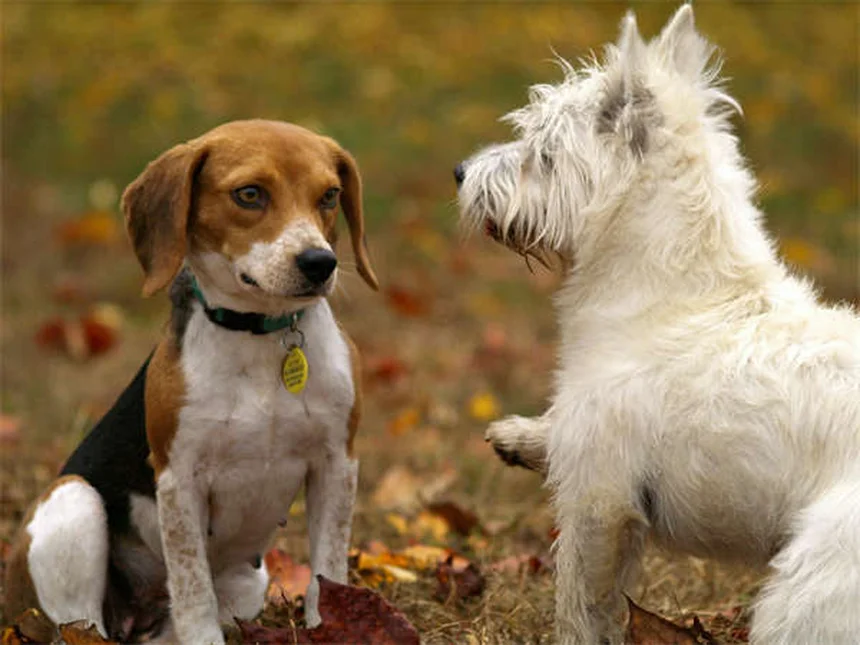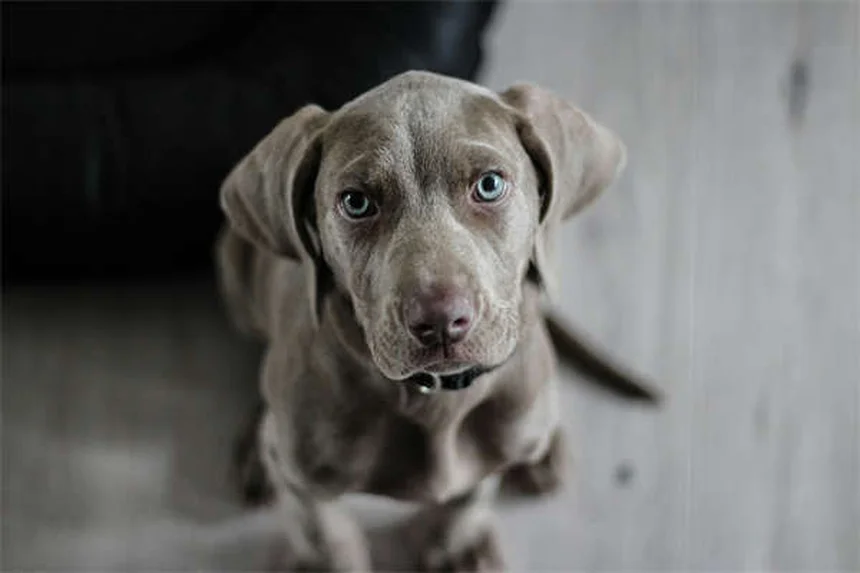Why is my dog peeing so much? The answer is: Excessive urination in dogs can be caused by medical conditions like diabetes or kidney disease, but also by simple factors like hot weather or diet changes! As a dog owner myself, I know how worrying it can be when your pup suddenly starts having bathroom accidents or begging to go out constantly. In this guide, we'll break down the normal peeing habits for dogs of all ages, reveal the 7 most common reasons for increased urination, and give you clear signs that mean you should call your vet immediately. Whether it's your playful puppy or your senior companion, understanding their urinary health is crucial - and we're here to make it simple for you!
E.g. :Ephedrine for Pets: 5 Must-Know Facts About This Urinary Incontinence Treatment
- 1、Is Your Dog Peeing More Than Usual? Let's Figure Out Why!
- 2、Red Flags: When to Call the Vet STAT
- 3、The Mystery of Excessive Peeing: Medical Causes
- 4、Non-Medical Reasons for Pee Overload
- 5、What Happens at the Vet's Office?
- 6、Treatment Options Based on Cause
- 7、The Hidden Messages in Your Dog's Pee
- 8、Behavioral Pee Patterns You Shouldn't Ignore
- 9、Prevention is Better Than Cure
- 10、When to Start Worrying About Age-Related Changes
- 11、Funny Pee Stories (Because We All Need a Laugh)
- 12、FAQs
Is Your Dog Peeing More Than Usual? Let's Figure Out Why!
Hey there, fellow dog lover! Have you noticed your pup making more trips to the backyard lately? Excessive urination in dogs can be confusing, but don't worry - I'm here to help you understand what's normal and when you should be concerned.
What's Normal for Dog Pee Habits?
Before we panic about frequent urination, let's establish some baselines. Did you know a healthy dog's bathroom habits can tell us a lot about their wellbeing?
| Dog Type | Urination Frequency | Daily Volume |
|---|---|---|
| Adult Dogs | Every 6-8 hours | 20-40 ml per kg |
| Puppies | Every 2-6 hours | Varies by age |
| Senior Dogs | More frequent | Often increased |
The Pee-pee Details by Age Group
Adult dogs are like clockwork - they typically need to go every 6-8 hours. My neighbor's golden retriever, Max, holds it like a champ during his owner's workday!
But here's something interesting: puppies are a whole different story. That little ball of energy needs bathroom breaks as often as their age in months. So a 3-month-old pup? Every 3 hours, like it or not!
And our senior buddies? Well, let's just say they've earned the right to more bathroom privileges. Their systems don't work quite like they used to, and that's perfectly normal.
Red Flags: When to Call the Vet STAT
Now, I know what you're thinking: "How do I know when it's serious?" Great question! While most increased urination isn't an emergency, some symptoms demand immediate attention.
 Photos provided by pixabay
Photos provided by pixabay
Drop Everything and Call the Vet If...
• Blood in the urine (nope, that's never normal)
• Straining with little or no output (ouch!)
• Lethargy combined with excessive peeing
• Not eating for over 24 hours
Remember my friend's dachshund, Wiener? He started peeing like a racehorse and turned out to have a bladder infection. The vet caught it early thanks to these warning signs!
The Mystery of Excessive Peeing: Medical Causes
Alright, let's play detective. Why might your dog suddenly think your lawn is their personal bathroom? There are two main types of urinary issues to consider.
Polyuria: When Quantity Goes Wild
This fancy term just means your dog is producing large volumes of urine. Possible culprits include:
Kidney issues: The kidneys' filtration system goes haywire, letting too much water escape. It's like a broken dam - everything just flows right through!
Diabetes: Sugar in the bloodstream acts like a sponge, pulling water into the urine. Your poor pup might be drinking from their bowl like it's going out of style.
Did you know there are actually two types of doggy diabetes? The more common one (mellitus) involves insulin problems, while the rare one (insipidus) messes with water balance hormones.
Pollakiuria: The Frequent Flyer Program
This is when your dog pees small amounts constantly. Picture them doing the "pee-pee dance" every 10 minutes. Common causes include:
UTIs: Bacterial party in the bladder! These infections irritate the lining, making your dog feel like they always need to go.
Stones or crystals: Imagine peeing with tiny rocks in your bladder. Not fun, right? These mineral deposits cause serious discomfort.
Fun fact: Some stones can actually be dissolved with special diets, while others need surgical removal. Your vet can tell you which type your dog has.
Non-Medical Reasons for Pee Overload
Not every bathroom emergency means your dog is sick. Sometimes the explanation is simpler than you think!
 Photos provided by pixabay
Photos provided by pixabay
Drop Everything and Call the Vet If...
• Diet: That new low-protein food? Might be making your dog pee more. High-sodium treats can have the same effect.
• Weather: Hot summer days = more water consumption = more potty breaks.
• Exercise: Active dogs drink more to stay hydrated.
• Anxiety: Some dogs hold it during storms then flood the yard afterward!
My cousin's lab, Splash, refused to go out in the rain once and then created his own "lake" in their living room. True story!
What Happens at the Vet's Office?
If you do need to visit the vet, here's what to expect. They'll likely run some tests to solve the urinary mystery.
The Diagnostic Toolbox
• Bloodwork checks kidney and liver function
• Urinalysis looks for infections or crystals
• X-rays or ultrasound reveal stones or tumors
• Special tests for conditions like Cushing's disease
Pro tip: Try to catch a fresh urine sample before your appointment. It makes diagnosis much easier! An old soup ladle works great for this - just don't use it for cooking afterward!
Treatment Options Based on Cause
The good news? Most causes of excessive urination are treatable once identified. Here's the scoop on common solutions.
From Simple to Complex Treatments
Infections: Usually just need antibiotics. Easy peasy!
Diabetes: Requires insulin injections but manageable.
Stones: Some dissolve with food, others need surgery.
Cancer: May need combination treatments.
Remember Wiener the dachshund? Two weeks of antibiotics and he was back to his normal self, marking every bush in the neighborhood!
 Photos provided by pixabay
Photos provided by pixabay
Drop Everything and Call the Vet If...
• Always provide fresh water
• Stick to regular bathroom schedules
• Watch for changes in drinking habits
• Keep up with vet check-ups
At the end of the day, you know your dog best. If their peeing patterns seem off, trust your gut. A quick vet visit could save you both lots of stress down the road.
Now go give your pup some extra belly rubs from me! And maybe keep an eye on how often they visit their favorite pee spot...
The Hidden Messages in Your Dog's Pee
You might not realize it, but your dog's urine is like a liquid newspaper - it's packed with information! Color, smell, and frequency can all tell us stories about what's happening inside your pup's body.
What That Yellow Liquid is Telling You
Ever notice how your dog's pee changes shades? Light yellow usually means they're well-hydrated, while dark amber could signal dehydration. But here's something wild - did you know some medications can turn urine bright yellow or even orange?
I'll never forget when my friend's beagle started peeing neon yellow after starting new vitamins. We thought it was glow-in-the-dark pee at first! Turns out it was just excess riboflavin being flushed out. The vet said it's completely harmless, though it did make for some interesting nighttime potty breaks.
The Nose Knows: Decoding Urine Odors
Normal dog pee has a distinct smell, but certain aromas should raise red flags. Strong ammonia smells might indicate concentrated urine from dehydration, while a sweet, almost fruity odor could point to diabetes.
Here's a fun experiment - next time your dog pees, take a quick sniff (from a respectful distance, of course). If it smells unusually foul or fishy, that might suggest a urinary tract infection. My neighbor's poodle had UTIs so often they nicknamed her "Princess Pee-a-lot"!
Behavioral Pee Patterns You Shouldn't Ignore
Dogs don't just pee to relieve themselves - they're sending messages with every squat! Understanding these behaviors can help you spot problems early.
The Strange Case of the Phantom Pee
Have you ever seen your dog assume the position but nothing comes out? This straining without production is a classic sign of urinary blockage, especially in male dogs. It's an absolute emergency - their urethra might be obstructed by stones or inflammation.
Why is this more common in males? Simple anatomy! Female dogs have shorter, wider urethras that are less likely to get blocked. Male dogs? They've got this long, narrow plumbing that's prone to traffic jams. Think of it like trying to push a grape through a drinking straw!
The Marking Marathon
Is your dog suddenly marking every vertical surface in the neighborhood? While some marking is normal, excessive territory claiming can signal anxiety or hormonal issues.
Here's an interesting fact - neutered males mark less than intact males, but they'll still do it if they feel threatened or stressed. My sister's terrier started marking like crazy when they brought home a new kitten. The solution? More exercise and some pheromone diffusers to calm him down.
Prevention is Better Than Cure
You know what they say - an ounce of prevention is worth a pound of cure! Here are some simple ways to keep your dog's urinary system in tip-top shape.
Hydration Station: Keeping the Flow Going
Did you know many urinary issues stem from simple dehydration? Encouraging water intake is one of the easiest ways to prevent problems. Try these tricks:
• Add low-sodium chicken broth to their water (my lab goes crazy for this!)
• Use a pet water fountain - the moving water entices them to drink more
• Place multiple water bowls around your house
• Feed wet food or add water to dry kibble
Here's a cool fact - dogs should drink about 1 ounce of water per pound of body weight daily. So a 50-pound dog needs about 50 ounces (that's 6 cups!) of water every day.
The Perfect Potty Schedule
Establishing a consistent bathroom routine does wonders for urinary health. Dogs thrive on predictability, and their bladders appreciate the regularity too!
For adult dogs, aim for:
• First thing in the morning
• Mid-morning if possible
• Right after work/school
• After dinner
• Right before bedtime
Puppies and seniors will need more frequent trips, of course. My aunt's 14-year-old golden retriever needs to go out about every 3 hours now - we joke that he's got the bladder of a teacup chihuahua!
When to Start Worrying About Age-Related Changes
As dogs get older, their bathroom habits naturally change. But how do you know what's normal aging and what's a red flag?
The Senior Dog Pee Checklist
These changes are typically normal in older dogs:
• More frequent urination
• Occasional accidents in the house
• Slightly increased water intake
• Taking longer to find the perfect spot
But these signs warrant a vet visit:
• Sudden drastic increase in urination
• Straining or crying while peeing
• Blood in the urine
• Drinking entire bowls at once
My vet has a great saying: "Old age isn't a disease, but it can hide one." Regular senior check-ups (every 6 months) can catch problems before they become serious.
Puppy Pee Peculiarities
Little puppies have tiny bladders and even less control! Here's what to expect at different ages:
| Puppy Age | Typical Holding Time | Special Considerations |
|---|---|---|
| 8-10 weeks | 1 hour max | Needs overnight potty breaks |
| 3-4 months | 2-3 hours | Can start crate training |
| 5-6 months | 4 hours | Nearly adult bladder capacity |
Remember, every puppy develops at their own pace. My brother's bulldog puppy took forever to housebreak - we called him "Sir Puddles-a-Lot" for months!
Funny Pee Stories (Because We All Need a Laugh)
Let's end on a light note with some hilarious real-life dog pee stories from fellow pet owners.
The Great Fire Hydrant Incident
One of my clients had a male beagle who became obsessed with a particular fire hydrant. He'd walk past twenty perfectly good trees just to pee on this one hydrant. Then one day, the city repainted it... and the poor dog stood there confused for ten minutes trying to figure out why his favorite bathroom smelled different!
The Sneaky Bed-Wetter
A friend's dachshund developed a clever trick - she'd pretend to be asleep in bed, then quietly pee while maintaining perfect sleeping position! They didn't realize what was happening until they felt the warm spot. The solution? Waterproof mattress covers and more frequent potty breaks.
At the end of the day, while excessive peeing can sometimes signal health issues, it's also just part of the wonderful, messy adventure of dog ownership. Keep an eye on your pup's habits, trust your instincts, and don't hesitate to call your vet if something seems off.
Now if you'll excuse me, all this talk about pee has made me realize... it's time to take my own dog out for his evening potty break!
E.g. :Why is My Dog Peeing so Much? 11 Possible Causes | The Vets
FAQs
Q: How often should a healthy adult dog pee?
A: A healthy adult dog typically pees every 6-8 hours and produces about 20-40 milliliters of urine per kilogram of body weight daily. For example, my neighbor's 45-pound Labrador should pee about 14-28 ounces per day. However, this can vary based on how much water they drink, their activity level, and the weather. Pro tip: If your dog suddenly starts needing bathroom breaks much more frequently than this baseline, it's worth paying attention. I've seen cases where what seemed like a small change in urination habits actually signaled the beginning of diabetes in dogs. Always monitor both the frequency and the amount - large volumes of urine often indicate different health issues than frequent small puddles.
Q: What are the most dangerous signs with frequent urination?
A: While increased peeing isn't usually an emergency, these red flags mean you should see your vet immediately: blood in the urine, straining to urinate with little output, lethargy, vomiting, or not eating for over 24 hours. From my experience working with vets, the most critical situation is when a male dog strains to pee but produces nothing - this could indicate a life-threatening urinary blockage. Another urgent case is when excessive urination is paired with excessive drinking in female dogs - this combination sometimes signals pyometra, a dangerous uterine infection. Remember, you know your dog best - if their behavior seems "off" along with bathroom changes, trust your instincts!
Q: Can diet really affect how much my dog pees?
A: Absolutely! Diet plays a huge role in your dog's urinary habits. Low-protein or high-sodium foods can significantly increase urine production - it's like when we eat salty chips and get thirsty! I've helped many clients solve mystery peeing issues simply by switching to a balanced diet. Some prescription urinary foods are actually designed to make dogs pee more to flush out crystals. Watch out for salty treats too - that beggin' strip might be delicious, but it could have your pup doing the potty dance all night. A good rule of thumb: if you notice increased urination after a diet change, mention it to your vet at the next check-up.
Q: My senior dog is peeing more - is this normal?
A: While some increase in urination is common with age, it shouldn't be dramatic. Senior dogs may need more bathroom breaks due to weaker bladder muscles or cognitive changes (sometimes they just forget they already went!). However, excessive urination in older dogs can also signal serious conditions like kidney disease or diabetes. My own 12-year-old terrier started having accidents last year, and it turned out to be Cushing's disease. The key is to track changes - is your senior dog drinking way more water? Having accidents indoors after years of being housebroken? These are signs worth discussing with your vet. The good news is many age-related urinary issues are manageable with medication or simple lifestyle adjustments!
Q: What tests will my vet do for excessive urination?
A: Your vet will likely start with three basic tests: bloodwork to check kidney and liver function, a urinalysis to look for infections or crystals, and possibly an ultrasound or x-rays to examine the bladder and kidneys. In my experience, these tests catch about 80% of urinary issues. For more complex cases, they might run specialized tests like an ACTH stimulation test for Cushing's disease or a urine culture to identify specific bacteria. Pro tip: Try to bring a fresh urine sample to your appointment - catching it mid-stream in a clean container gives the most accurate results. And don't worry if the first test doesn't show anything; sometimes monitoring over time is needed to spot patterns.



Discuss